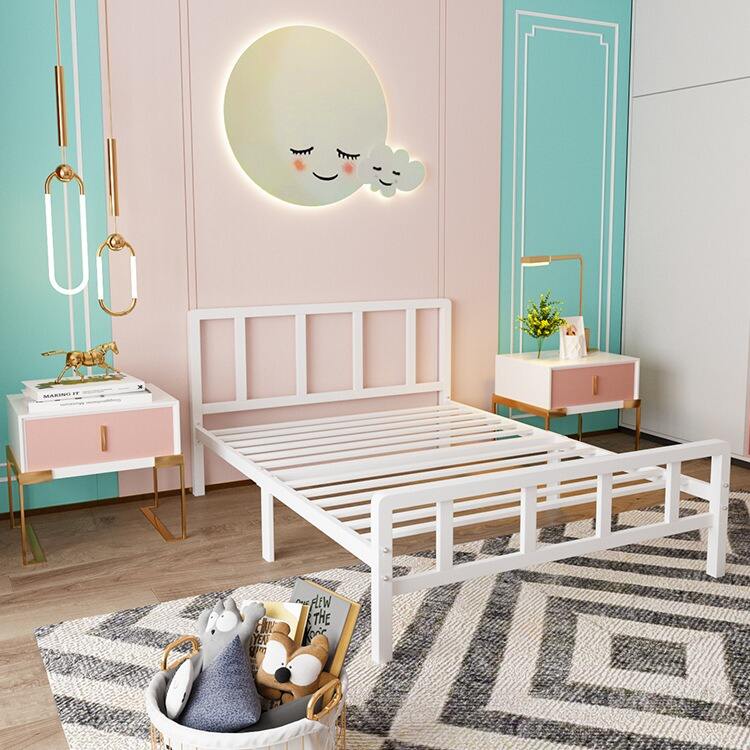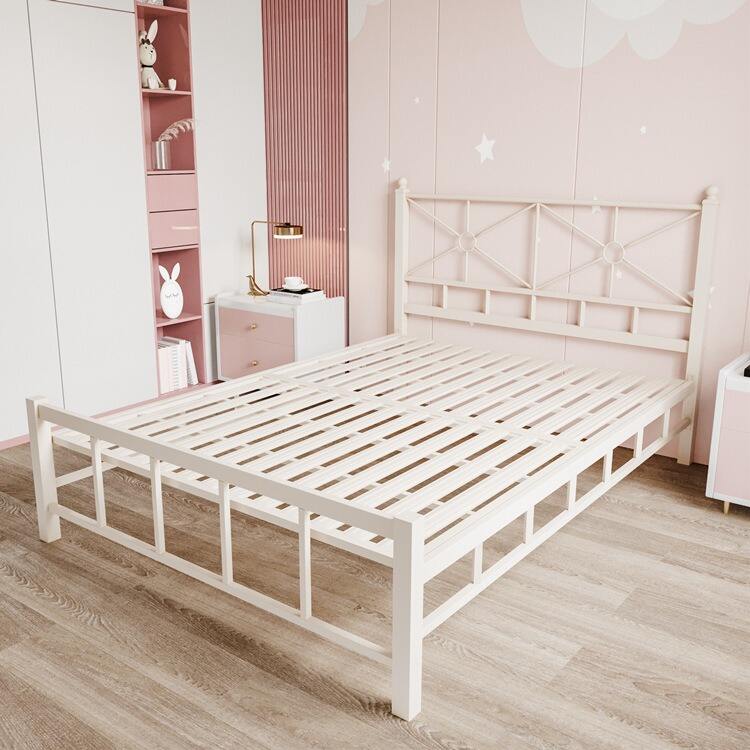Understanding the Durability Battle Between Bed Frame Materials
When it comes to furnishing your bedroom, choosing between wooden and metal single beds represents more than just an aesthetic decision. The durability of your bed frame directly impacts both your comfort and long-term investment. Modern single beds come in various designs and materials, each offering unique benefits and potential drawbacks that deserve careful consideration.
Both wooden and metal single beds have earned their place in homes worldwide, with manufacturers continuously improving their construction techniques and material quality. Understanding the strengths and limitations of each material type helps ensure you make an informed decision that aligns with your specific needs and lifestyle.
The Enduring Appeal of Wooden Single Beds
Natural Strength and Structural Integrity
Wooden single beds have been a staple in bedroom furniture for centuries, and for good reason. High-quality hardwoods like oak, maple, and teak offer exceptional durability when properly maintained. The natural density and grain structure of wood provide excellent weight distribution and resistance to daily wear and tear. Premium wooden single beds can easily last for decades, often becoming cherished family heirlooms.
The structural integrity of wooden beds comes from their solid construction methods, including mortise and tenon joints, dovetail connections, and reinforced corner blocks. These traditional woodworking techniques create robust frames that maintain stability even after years of regular use.
Maintenance Requirements and Longevity
While wooden single beds demonstrate remarkable durability, they do require proper care to maintain their strength and appearance. Regular dusting, occasional polishing, and protection from excessive moisture help preserve the wood's natural properties. Climate control plays a crucial role, as extreme temperature and humidity fluctuations can affect wooden furniture over time.
With appropriate maintenance, wooden beds resist warping and maintain their structural soundness. Many owners find that their wooden single beds actually improve aesthetically over time, developing a rich patina that enhances their character and value.

Metal Single Beds: Modern Durability Solutions
Strength and Weight Capacity
Modern metal single beds showcase impressive engineering achievements in durability. Steel and aluminum frames offer exceptional strength-to-weight ratios, often supporting greater weights than their wooden counterparts. Advanced manufacturing techniques, including welded joints and reinforced stress points, create beds that remain sturdy through years of use.
The inherent strength of metal frames makes them particularly suitable for active sleepers or in settings where beds endure frequent movement or repositioning. Many contemporary single beds feature powder-coated finishes that add an extra layer of durability while preventing rust and corrosion.
Resistance to Environmental Factors
Metal single beds excel in environments where wooden frames might struggle. They resist pests, require minimal maintenance, and handle humidity variations without structural compromise. The non-porous nature of metal means these beds are less likely to absorb odors or harbor allergens, making them ideal for allergy sufferers.
Modern protective treatments and finishes enhance metal beds' resistance to scratches, dents, and environmental wear. This durability makes them particularly popular in rental properties, dormitories, and other high-use settings.
Comparative Analysis of Long-term Performance
Impact Resistance and Daily Wear
When comparing wooden and metal single beds, impact resistance becomes a crucial factor. Wooden frames generally absorb shock better, reducing noise and providing a more solid feel. However, they may show visible marks from heavy impacts. Metal frames, while potentially more prone to denting, often maintain their structural integrity even after significant impacts.
Daily wear patterns differ between the materials. Wooden frames might show surface scratches but can be refinished, while metal frames typically show less wear but may be more challenging to restore if damaged.
Cost-Effectiveness Over Time
Initial investment often varies significantly between wooden and metal single beds, but long-term value depends on multiple factors. High-quality wooden beds typically command higher prices but offer excellent longevity and timeless appeal. Metal frames often provide more affordable options while maintaining good durability standards.
Maintenance costs also factor into the long-term equation. Wooden beds might require occasional refinishing or professional care, while metal frames generally need minimal upkeep beyond basic cleaning and occasional tightening of components.
Making the Right Choice for Your Needs
Environmental Considerations
Environmental impact increasingly influences furniture choices. Sustainable wooden single beds, particularly those made from certified sources, offer eco-friendly appeal. Metal beds, while requiring more energy in production, are highly recyclable and often incorporate recycled materials in their construction.
Both materials can support environmentally conscious decisions when sourced responsibly. The longevity of both wooden and metal beds contributes to sustainability by reducing the need for frequent replacements.
Style and Adaptability
Durability extends beyond physical strength to include style longevity. Wooden single beds often feature classic designs that remain relevant across decades. Metal beds, while sometimes associated with specific design trends, can offer timeless appeal through simple, clean lines and versatile finishes.
Both materials adapt well to changing décor preferences through different finishing options. Wooden beds can be refinished or painted, while metal frames accept new powder coating or paint applications effectively.
Frequently Asked Questions
How long can I expect a quality single bed to last?
A well-maintained wooden or metal single bed typically lasts 15-20 years or more. Quality wooden beds often exceed this timeframe, while metal beds maintain their structural integrity for comparable periods under normal use conditions.
What maintenance do different bed materials require?
Wooden single beds need regular dusting, occasional polishing, and protection from moisture. Metal beds require periodic checking of joints and connections, along with basic cleaning to prevent rust in humid environments.
Can these beds be repaired if damaged?
Both materials offer repair options. Wooden beds can be professionally restored, refinished, or have parts replaced. Metal beds may require welding for structural repairs, while surface damage often responds well to refinishing techniques.
Which material provides better value for money?
Value depends on individual circumstances. Premium wooden single beds often cost more initially but maintain value well. Metal beds typically offer excellent durability at lower price points, making them cost-effective for many situations.


